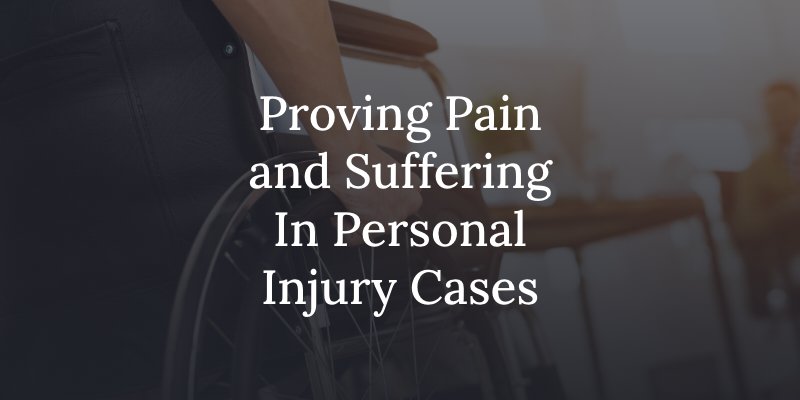A sudden serious injury has momentous consequences for the injury victim and their family members. Medical bills pile up at the same time they may be unable to work while undergoing painful medical treatments and enduring long recovery periods. The significant economic and non-economic consequences of a serious injury become the “damages” in a personal injury claim.
Economic losses are tangible and easy to calculate, but intangible non-economic damages like pain and suffering are the worst aspects of an injury. Fortunately, the civil courts allow injury victims to seek compensation for their pain and suffering. Even though financial compensation doesn’t erase the pain, it does help increase the amount of a settlement or court award and provides a sense of justice. But how do you prove intangible pain and suffering?

It’s Possible to Prove Your Pain and Suffering In a Personal Injury Case
It’s easy to tabulate economic damages by adding up medical bills and related expenses and then totaling the weeks or months of lost pay. Although proving pain and suffering isn’t as straightforward, it is possible to prove that an injury victim has suffered pain, even when there are no numbers attached. Proving pain and suffering requires evidence and testimony from the injury victim, family members, and medical professionals.
Expert Witnesses
There are specific expert witnesses often called upon to provide testimony to prove pain and suffering. A medical expert who specializes in the type of injury the victim sustained may explain how the injury causes pain, the level of pain the person can expect to endure until they reach their maximum medical improvement, and the way the pain might impact them, such as limiting their mobility. An occupational therapist may be called to explain how the injury victim’s pain would affect their ability to work at their usual job. A mental health professional may give insight into the way the injury victim’s level of pain would impact their emotional well-being or mental health state.
Medical Reports and Medical Bills
An injury victim’s medical report and medical bills provide key evidence of the level of care their injury requires and the painful medical treatments involved. The more extensive the treatment, the more likely it is that the injury victim experiences prolonged pain and suffering from their injury. Additionally, if the injury victim has sought counseling during their recovery, the evidence of their sessions with a counselor helps to prove that they’ve sought help dealing with the suffering associated with painful injuries.
Some injury lawyer use a formula based on medical bills to calculate an amount of compensation for the injury victim’s pain and suffering. Reaching out to a personal injury attorney to figure out compensation would be very helpful and can make the process more understanding and efficient.
Prescription History
An injury victim’s prescription history also helps to provide evidence of pain and suffering. Prescribed pain medications indicate that the injury victim’s doctor acknowledges that the type of injury the claimant experienced is painful. An injury victim should always fill every prescription.
Injury Victim and Family Testimony
The injury victim may give testimony about the impact of their injury or present a pain journal where they’ve indicated the level of pain they’ve suffered each day through daily journal entries. Their family members may also testify to what they’ve personally witnessed by describing the way the injury has changed the victim’s life and its impact on their daily routines.
Compensation for Pain and Suffering in Personal Injury Cases
There are several different formulas attorneys use to arrive at a dollar amount to request for an injury victim’s pain and suffering. Insurance companies consider the depositions of expert witnesses and eyewitnesses in the case as well as the medical report. They appraise the severity of the injury, whether or not it requires painful treatment like surgery or physical therapy, the expected recovery time, and the overall impacts on the victim’s life. An injury victim’s attorney emphasizes the evidence proving pain and suffering as they negotiate for the largest possible settlement in the case.

